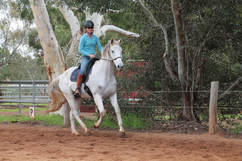
After several thousand years of domestication it’s inevitable that a certain degree of anthropomorphism has crept in to the relationship that we have with our domesticated animals. And perhaps, like familiarity, anthropomorphism breeds contempt. Or, if not contempt, then at least a certain degree of complacency. After all, when we only ever view animals with our anthropocentric glasses on they seem like lesser versions of ourselves. They can’t talk, they can’t drive cars, they can’t update their Facebook status. But what an anthropocentric perspective fails to acknowledge is that if the boot was on the other foot (or paw) it would be us who were lesser versions of them. How slowly we run. How blind and deaf we are. How badly we fly.



 RSS Feed
RSS Feed
